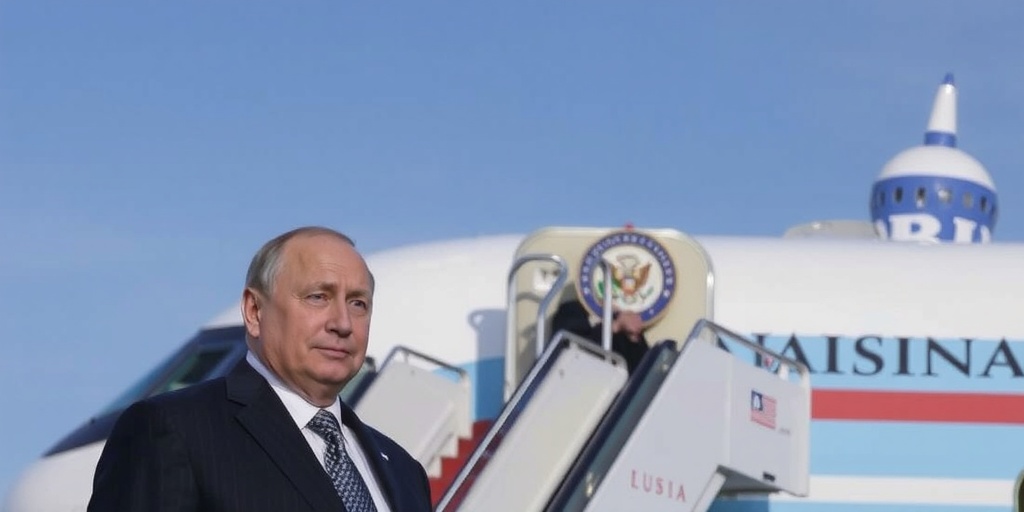Now Reading: Biden Aides Alert Putin Amid Russia’s Risk of Air Disaster
-
01
Biden Aides Alert Putin Amid Russia’s Risk of Air Disaster
Biden Aides Alert Putin Amid Russia’s Risk of Air Disaster

Rumored Russian Sabotage Threats Prompt US and NATO Response
In a summer marked by unexpected cargo fires at airports and warehouses across Germany, Britain, and Poland, officials in Washington and Europe quickly attributed the incidents to Russian sabotage. The alarming trend sparked a sense of urgency as intelligence suggested that Moscow had broader, more sinister intentions—to export the war in Ukraine to American soil. This prompted White House officials to reconsider their strategic approach towards Russia and its President, Vladimir V. Putin.
In August, as US officials dove deeper into the situation, they uncovered intelligence hinting at a methodical plan by Russia’s military intelligence, known as the G.R.U. Reports indicated that certain shipments, including seemingly innocuous items like small electronic massagers, had begun spontaneously combusting. The underlying fear was palpable; the Russians appeared to be conducting tests on how to bypass air cargo screening systems, with intentions to send incendiary devices on flights bound for the United States and Canada.
Alejandro Mayorkas, the Secretary of Homeland Security, expressed the gravity of the situation in a recent interview. He underscored the inherent risk of disasters occurring in midair, where incendiary devices could possibly ignite in fully loaded passenger or cargo planes. In response to this escalating threat, Mayorkas initiated tighter cargo screening measures and urged major airlines to implement enhanced safety protocols to prevent a potential catastrophe.
Behind closed doors in the White House Situation Room, officials wrestled with a pressing question: had Putin directly orchestrated the plot, or was he kept in the dark about this dangerous initiative? As alarms rose in October, the administration initiated an urgent communication strategy aimed at warning Putin of the dire consequences of these actions.
Utilizing a playbook established in October 2022—during a surge of concern over Russia’s potential nuclear plans in Ukraine—President Biden sent national security adviser Jake Sullivan and CIA Director William J. Burns to convey serious warnings to the Kremlin. They emphasized that if the sabotage resulted in significant loss of life, the United States would hold Russia accountable for "enabling terrorism."
In this intricate diplomacy dance, Sullivan engaged Russian counterparts, beginning with Yuriy Ushakov. During these discussions, he highlighted the Philadelphia assassination plot against the CEO of Germany’s Rheinmetall, an arms manufacturer crucial to Ukraine’s defense efforts. Speaking cautiously, Sullivan warned Ushakov about the reckless nature of the incendiary devices’ deployment and the severe risks posed to civilian airline passengers.
Simultaneously, Burns communicated with key figures in Russia’s intelligence community such as Sergey Naryshkin and Alexander Bortnikov, both of whom were also instrumental in conveying messages to Putin. The administration’s key aim was to ensure that the warning reached the top echelons of Russian leadership, emphasizing that the reckless sabotage plans could escalate military tensions between the US and Russia.
While the direct conversations between Washington and Moscow had been non-existent since the onset of the Ukraine conflict in February 2022, this incident showcased a persistent indirect communication channel. Following the warnings, signs emerged suggesting that these messages were received, as the spate of suspicious fires in Europe seemed to have subsided. However, US officials are left questioning whether Putin genuinely halted the activities or if Russia is merely biding time to develop more sophisticated, covert sabotaging methods.
Such operations could allow Russia to maintain plausible deniability should those plans backfire. Analysts indicate that the Russian military may see these initiatives as a justified retaliation against Ukrainian attacks on their territory, many of which have benefited from US military aid and intelligence.
After nearly two years of maintaining a limited foothold solely within Ukraine, Russian tactics have evolved to include acts of sabotage that could threaten the safety of NATO countries. Reports of mysterious fires, GPS disruptions, and undersea cable damage have now marked a new phase of conflict, causing a paradigm shift in European security protocols.
US intelligence assistance has led to significant raids, including thwarting attempts on high-profile officials like the CEO of Rheinmetall. Nevertheless, the symbolic and significant cargo fire at the DHL facility in Leipzig—prompting immediate investigations—has escalated responses to ensure civilian safety.
As the complexities of hybrid warfare continue to evolve, US officials remain vigilant about the implications for transatlantic relations and NATO’s unity. With officials noting the convergence of national security and domestic safety risks, the Biden administration grapples with the broader implications of Russia’s renewed aggressive posture.
This incident is a stark reminder of the interconnectedness of global events and how local threats can have far-reaching consequences. As Richard Haass, former president of the Council on Foreign Relations, noted, the ongoing intelligence threats illustrate how Russia has shifted into a more revolutionary actor, challenging the international order and testing the resolve of its adversaries in new and dangerous ways. The critical question looms: how effectively can future administrations, including a potential Trump administration, respond to these evolving threats and restore stability in a complex global landscape?
Stay Informed With the Latest & Most Important News
Previous Post
Next Post
-
 01New technology breakthrough has everyone talking right now
01New technology breakthrough has everyone talking right now -
 02Unbelievable life hack everyone needs to try today
02Unbelievable life hack everyone needs to try today -
 03Fascinating discovery found buried deep beneath the ocean
03Fascinating discovery found buried deep beneath the ocean -
 04Man invents genius device that solves everyday problems
04Man invents genius device that solves everyday problems -
 05Shocking discovery that changes what we know forever
05Shocking discovery that changes what we know forever -
 06Internet goes wild over celebrity’s unexpected fashion choice
06Internet goes wild over celebrity’s unexpected fashion choice -
 07Rare animal sighting stuns scientists and wildlife lovers
07Rare animal sighting stuns scientists and wildlife lovers




















